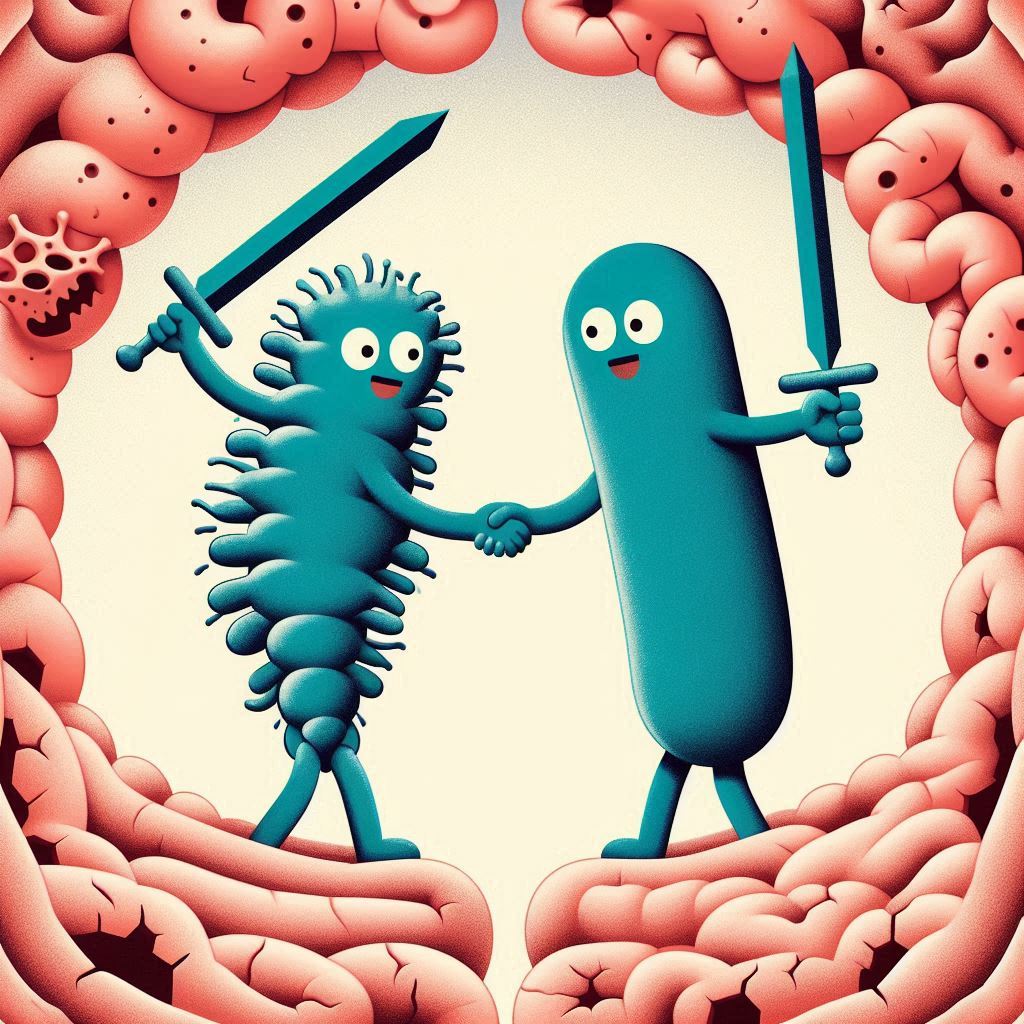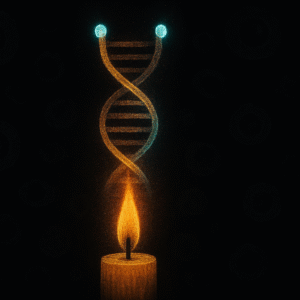The recent Digestive Disease Week (DDW) Congress in Washington D.C. unveiled groundbreaking insights into the world of gut parasites. One session, in particular, highlighted an ingenious strategy employed by Giardia lamblia, the microscopic culprit behind giardiasis. This discovery challenges our understanding of how parasites operate and interact with our gut microbiome, revealing a complex and cunning interplay that could reshape our approach to gut health and disease.
Table of Contents
The Unexpected Alliance: Giardia Manipulates E. Coli
Giardia lamblia, a protozoan parasite, has long been known for causing giardiasis, an intestinal infection that leads to symptoms such as diarrhea, abdominal cramps, bloating, and fatigue. However, recent research has uncovered a surprising twist in Giardia’s invasion strategy: it has found an unlikely accomplice in its quest to colonize the human gut—harmless resident E. coli bacteria.
This revelation is groundbreaking because it challenges the traditional view of how parasites interact with their hosts. Instead of acting alone, Giardia appears to manipulate the resident bacteria within our gut to facilitate its own invasion. This discovery not only sheds light on the sophisticated tactics employed by parasites but also underscores the intricate relationships within our gut microbiome.
The Gut’s Protective Barrier and Giardia’s Devious Plan
Our gastrointestinal (GI) tract is a bustling ecosystem, home to trillions of microbes, including beneficial strains of E. coli. These bacteria coexist peacefully with us, playing crucial roles in digestion, nutrient absorption, and immune function. The GI mucosa, a protective layer lining the gut, acts as a crucial barrier, allowing helpful microbes to thrive while keeping harmful pathogens at bay.
The mucosal barrier is a complex structure composed of epithelial cells, mucus, and immune cells. It serves as the first line of defense against invading pathogens, preventing them from breaching the gut lining and causing infection. However, this barrier is not impenetrable, and certain pathogens have evolved strategies to bypass or disrupt it.
Normally, the GI mucosa effectively blocks Giardia’s invasion attempts. However, new research suggests that Giardia has evolved a clever workaround. By potentially altering gene expression in resident E. coli, Giardia disrupts the protective mucosa, creating an opening for its own colonization.
This manipulation of E. coli by Giardia is a sophisticated strategy that highlights the parasite’s ability to exploit the existing microbial community within the gut. By co-opting the resident bacteria, Giardia can weaken the mucosal barrier, making it easier for the parasite to establish an infection. This finding represents a paradigm shift in our understanding of gut health and disease, emphasizing the need to consider the complex interplay between parasites, resident bacteria, and our own immune defenses.

Rethinking Gut Health: The Paradigm Shift
The discovery that Giardia manipulates E. coli forces us to rethink our approach to gut health and disease. Traditionally, research and treatment strategies have focused on bacterial imbalances, such as dysbiosis, as the primary drivers of gut-related disorders. However, this new finding suggests that we must also consider the role of parasites and their interactions with resident bacteria.
This paradigm shift has significant implications for the diagnosis, treatment, and prevention of intestinal disorders. Rather than simply targeting bacterial imbalances, we must adopt a more holistic approach that takes into account the complex relationships between parasites, bacteria, and the host’s immune system. This approach could lead to the development of more effective treatments and preventive measures for giardiasis and other gut-related diseases.
Future Research Directions: Unraveling the Mystery
The findings from the DDW Congress open up exciting new avenues for scientific inquiry. Researchers are now faced with several intriguing questions:
- How exactly does Giardia manipulate E. coli? Understanding the molecular mechanisms underlying this manipulation is crucial for developing targeted interventions. Researchers will need to investigate the specific genes and pathways involved in the interaction between Giardia and E. coli.
- Could this mechanism apply to other gut parasites? If Giardia can manipulate E. coli, it is possible that other gut parasites have evolved similar strategies. Investigating whether this mechanism is unique to Giardia or a common tactic among gut parasites could provide valuable insights into the broader dynamics of gut infections.
- What are the implications for developing new treatments for giardiasis and other intestinal disorders? By targeting the interaction between Giardia and E. coli, researchers may be able to develop novel therapies that disrupt the parasite’s invasion strategy. This could lead to more effective treatments for giardiasis and potentially other gut-related diseases.
The Importance of Gut Balance
Giardia’s strategy underscores the delicate equilibrium within our gut ecosystem. Maintaining a healthy, diverse microbiome is crucial for overall well-being and may play a role in defending against parasitic invaders. A balanced gut microbiome supports the integrity of the mucosal barrier, enhances immune function, and helps prevent the colonization of harmful pathogens.
To promote gut health, it is essential to adopt a lifestyle that supports a diverse and balanced microbiome. This includes consuming a diet rich in fiber, fruits, and vegetables, which provide essential nutrients and promote the growth of beneficial bacteria. Probiotics and prebiotics can also play a role in maintaining gut health by supporting the growth of beneficial microbes and enhancing the mucosal barrier.
Giardia and Giardiasis: A Quick Look
For those unfamiliar, Giardia lamblia is a microscopic parasite that infects the small intestine. Giardiasis, the resulting illness, causes symptoms like diarrhea, abdominal cramps, bloating, and fatigue. It spreads through contaminated food, water, or contact with infected individuals or animals.
Giardiasis is a common infection worldwide, particularly in areas with poor sanitation and limited access to clean water. The parasite’s ability to survive in harsh environmental conditions, such as chlorinated water, makes it a persistent public health challenge. Understanding the mechanisms underlying Giardia’s invasion strategy is crucial for developing effective prevention and treatment measures.
Conclusion: A New Era in Gut Health Research
This groundbreaking research highlights the complex world of gut microbes and parasites, reminding us that there’s still much to learn about the intricate ecosystem within our own bodies. The discovery that Giardia manipulates E. coli represents a significant advancement in our understanding of gut health and disease. It challenges traditional views and opens up new avenues for research and treatment.
As we continue to explore the complex relationships within our gut microbiome, it is essential to adopt a holistic approach to gut health. By considering the interplay between parasites, resident bacteria, and the host’s immune system, we can develop more effective strategies for preventing and treating gut-related diseases. This research serves as a reminder of the delicate balance within our gut ecosystem and the importance of maintaining a healthy, diverse microbiome for overall well-being.
In the coming years, we can expect to see further advancements in our understanding of gut health, driven by innovative research and a growing appreciation for the complexity of the gut microbiome. The insights gained from studies like this one will pave the way for new treatments, preventive measures, and a deeper understanding of the intricate world within our own bodies.





